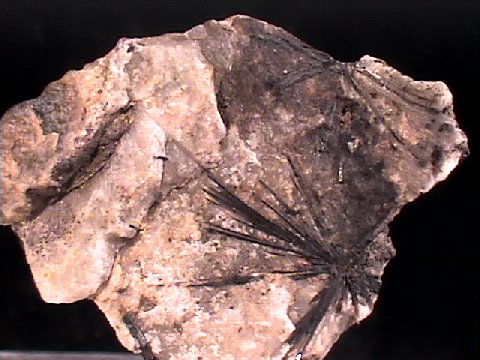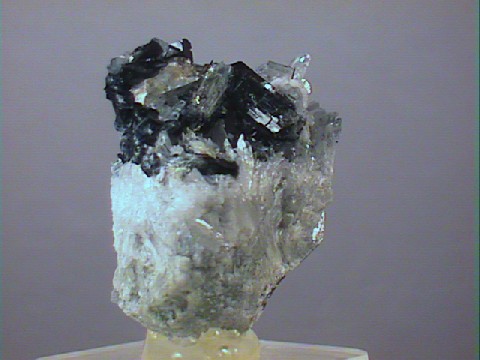 The Mineral ARFVEDSONITE
The Mineral ARFVEDSONITE
- Chemistry: Na3(Fe, Mg)4FeSi8O22(OH)2: Sodium Iron Magnesium Silicate Hydroxide.
- Class: Silicates
- Subclass: Inosilicates
- Group: Amphibole
- Uses: Only as mineral specimens.
Specimens
Arfvedsonite is named for the Swedish chemist. Johan A. Arfvedson. It is a sodium rich Amphibole Group mineral whose members are important rock forming minerals. Arfvedsonite however is of limited distribution compared to most of the other common members of the group. It is generally limited to light colored sodium rich igneous intrusions called nepheline syenites and agpaitic pegmatites of which there are only a few of the latter known to exist around the world. However, these rocks are actual treasure troves of rare minerals and specimens from them are found in most any good rock shop. Arfvedsonite is generally not the mineral of interest on these specimens, but it does make for a wonderful accessory mineral to the many rare and exotic species.
The chemistry of arfvedsonite is odd in another way in that it includes two different iron atoms. One is ferric (with a plus 3 charge) and one is ferrous (with a plus 2 charge). The ferrous iron occupies the same position as and substitutes with the plus 2 magnesiums because both ions are of nearly the same size. The ferric iron is smaller and can not occupy the same space as the ferrous iron. The formula is written the way it is in order to show the relationship of the different iron ions.
Arfvedsonite is a part of a solid solution series.
A solid solution series is where two or more elements can substitute for each other without changing the structure of the mineral.
Each end member of the series is a distinct mineral.
In this case the series involves the ferrous iron and magnesium ions.
Arfvedsonite is the iron rich member, while the magnesium rich member is called, unimaginatively,
The best localities for arfvedsonite include
Mont Saint-Hilaire, Quebec, Canada; the
Ilimaussaq Intrusion, in Southern Greenland; the agpaitic pegmatites of the Kola Peninsula, Russia and
PHYSICAL CHARACTERISTICS:
- Color is greenish-black, dark gray or black.
- Luster is vitreous to dull or silky in fibrous forms.
- Transparency: Crystals are translucent to opaque.
- Crystal System is monoclinic; 2/m.
- Crystal Habits include prismatic to acicular or even tabular crystals sometimes in radial stellate aggregates. Some specimens are up to 20 cm in length. Also fibrous, lamellar and massive. Twinning is seen as lamellar twins.
- Cleavage: is perfect in two directions at 56 and 124 degree angles.
- Fracture is uneven to subconchoidal.
- Hardness is 5.5 - 6.
- Specific Gravity ranges from 3.1 - 3.5 but is typically around 3.4 (slightly above average for non-metallic minerals).
- Streak is dark bluish-gray.
- Other Characteristics: Weakly pleochroic from dark green to blue-green to brownish-green, crystals are striated lengthwise and index of refraction is 1.69.
- Associated Minerals are
nepheline,
aegirine,
chkalovite,
sidorenkite ,thalcusite ,tugtupite ,makatite ,natrophosphate ,rasvumite , serandite,revdite ,erdite ,kogarkoite ,sazhinite ,vitusite , various feldspars, micas and several different feldspathoids. - Notable Occurrences include
Mont Saint-Hilaire, Quebec, Canada; the
Ilimaussaq Intrusion, in Southern Greenland; the agpaitic pegmatites of the Kola Peninsula, Russia; mines in the Ukraine; Rhineland, Germany;
Langesundfjord , Norway; Boulder County, Colorado and New Hampshire, USA. - Best Field Indicators are crystal habit, color, streak, cleavage and hardness.






